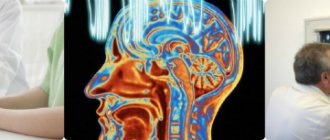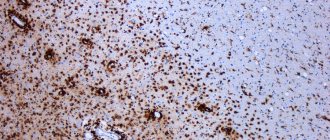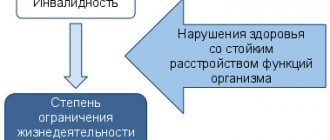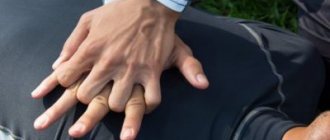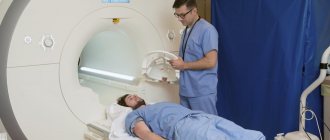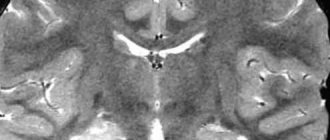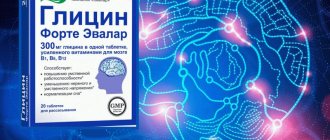About medical indications
When enrolling in courses at a driving school, you must provide a health certificate.
Let's look at what diseases do not give a driver's license and what vision restrictions for obtaining a driver's license apply today.
Question: 1. Is it possible to remove a similar diagnosis mentioned above? 2.What is the procedure for making a diagnosis?
3. Is it possible to remove this diagnosis in a private clinic so that the PND accepts, say, the results of examinations of a private clinic??
4.Is it possible to obtain a driver's license? The question does not describe the “first attack.” What happened then? I know of cases where illiterate neurologists prescribed antiepileptic treatment to children with single attacks of febrile seizures (a variant of the norm.
Federal Law of December 10, 1995 No. 196 “On Road Safety” (hereinafter referred to as Federal Law-196) established the need to conduct medical examinations, examinations and regular checks of all those who are going to become participants in this very traffic. Of course, each category of driver has its own deadlines and rules.
For example, public transport drivers are required to undergo a medical examination before each shift.
Receipt, replacement and restoration of rights are carried out only with a medical certificate of form 083/у-89. The certificate is issued after passing a medical examination at a licensed medical institution.
Restrictions for health reasons are listed in Order of the Ministry of Health and Social Development of the Russian Federation No. 302n dated April 12, 2011.
Color blindness in most cases will no longer be an obstacle to obtaining a driver's license - impaired color vision is excluded from the contraindications.
As far as I know, no.
There is such a document in the European Union, but it is not valid in the Russian Federation. There is one caveat - the doctor is not the main figure in the process of issuing rights; he has his own function - to give a medical opinion. Rights are issued by a separate service that reviews all submitted documents.
Therefore, theoretically, the medical commission can give the go-ahead for obtaining a license.
https://www.youtube.com/watch?v=
12. Epileptic seizures or other conditions manifested by a sudden disturbance of consciousness pose a serious danger, significantly increasing the risk of road traffic accidents when they occur among vehicle drivers.
The list of restrictions when driving a vehicle listed in the above resolution can be divided into groups. These are diseases in which:
- Certain conditions are required to drive a car. For example, the mandatory use of glasses;
- it is prohibited to drive a vehicle of a specific category;
- It is prohibited to drive any vehicle.
Existing contraindications to driving a car, which were identified during a medical examination, will not allow you to obtain a document confirming the right to drive vehicles (of the corresponding categories). In Art. 23.1. Law No. 196-FZ provides a detailed list of contraindications and driving restrictions for different categories. In addition, the ban or restrictions may be temporary.
By vision
For confident and safe driving of any vehicle, good vision is an important factor and is checked first at the medical examination:
- pungency;
- line of sight;
- color recognition.
If the visual acuity for obtaining a driver’s license does not meet the norm, then before getting behind the wheel, he must take care of correction means - lenses or glasses. Each category has its own indicators. If there is an eye injury, the question arises: is it legal to drive a car with one eye? If there is no eye, the vehicle must be equipped with a parking radar, and the APS mark must be placed on the license.
Until 2020, with color blindness, a category A and B driver did not have the right to work under a contract, and the car was not allowed to be used only as a personal means of transportation. Today there is a ban on driving a vehicle if you are color blind. In other European countries, such a problem as color blindness or any form of it, such as deuteranopia, does not exist and driving licenses do not exist.
Thus, most likely, with color blindness, a person will forever remain a pedestrian. Violations related to a small field of vision are rare, but denial of a driver's license is quite possible. To obtain a driver’s license, many citizens memorize tables of the arrangement of colors and letters on posters, but during a medical examination, deception is quickly revealed, so resorting to such measures is not recommended.
The legislation clearly defines all medical restrictions for drivers. A mental disorder can be temporary due to the current stressful situation, but there are also constantly progressive deviations. Let's look at what mental illnesses do not give you a driver's license. Driving is prohibited:
- with a pronounced delay or incomplete development of the psyche;
- in case of mental or behavioral disorders, manifestations of schizophrenia;
- if attacks of aggression and personality disorders occur;
- for diseases accompanied by affective disorders;
- side effects that occurred after treatment with psychotropic drugs.
That is, a driver's license and schizophrenia or any other disability are incompatible.
Epilepsy
Epilepsy is a serious disease in which a seizure can occur at any time and a person cannot predict it or feel it. Therefore, the answer to the question of whether it is possible to get a license with epilepsy is clearly negative. The risk of creating a dangerous situation on the road is too high.
Other diseases
At the medical examination for the issuance of a driver's license, the ailments of each person are considered individually. A list of diseases with which you cannot drive a car has been developed and approved:
- diabetes mellitus, severe diseases of the thyroid gland, neuroendocrine system;
- diseases of the cardiovascular system (cardiac ischemia, tachycardia and others);
- high blood pressure;
- liver and stomach diseases;
- problems with the respiratory system;
- congenital growth problems (dwarfism, dwarfism).
Standards have been developed for all diseases, and decisions are made collectively by all members of the commission. For example, standards have been established for what pressure a car should not be driven at: the optimal value is 120/80, and the maximum should not exceed 140/90 mmHg. Art. Previously, if a citizen had hearing problems, it was forbidden to drive a car.
If a driver has health problems, can he drive a car and what is necessary for this?
| Health problems | Requirements |
| With deformation of the legs, their absence, paralysis | Vehicle with manual control installed |
| If you have problems with your arms or legs | Vehicles with automatic gearbox |
| In the absence of one eye | Vehicle equipped with parking sensors |
| For deafness | Driving with a hearing aid |
Sometimes the driver has a serious eye disease in which glasses cannot correctly correct vision. In this case, it is permissible to drive the vehicle if it is equipped with an acoustic parking system.
Driver's license (license) and epilepsy
The Infiniti driver who hit pedestrians on the sidewalk in Astana either did not know about his illness or deliberately hid it when obtaining a driver's license.
Driver's remorse
On November 15, 2020, Bolat Moldagaliev, who hit pedestrians near the Keruen shopping center in Astana in an Infiniti car three days ago, spoke about the causes of the accident and asked for forgiveness from the victim Asel Rymkhanova - the girl was seriously injured.
In Astana, three girls were knocked down on the sidewalk
As follows from his message,
The cause of the accident was a sudden attack of illness,
which did not allow him to control the situation. Allegedly, everything could have ended much worse if eyewitnesses to the tragedy had not been able to open and stop the car while the driver himself was unconscious. He also reported that
he was taken unconscious from the scene of the accident by ambulance,
he underwent surgery and was then admitted to intensive care. Only now did he come to his senses and comprehend what had happened.
promised to do everything possible to make amends
“The only thing I ask is that there is no need for hasty conclusions. I am not a villain, not a scumbag. I am the same as all of you, an ordinary Kazakhstani. I was just unlucky, Asel and I were unlucky on this road of life.
Misfortune can happen to anyone, do not judge those to whom it happened. This is not just my fault, this is my misfortune, which I will carry throughout my life. Forgive me, Asel, if you can,” Moldagaliev wrote.
Earlier, the press service of the Department of Internal Affairs reported that
According to the driver’s mother, he was registered with a dispensary as a child
in one of the Almaty hospitals with a diagnosis of epilepsy. Investigators sent requests to the relevant medical institutions to provide supporting documents of his illness.
Bolat Moldagaliev’s letter of repentance caused a rather mixed reaction on social networks. While some users express sincere sympathy and understanding, others
We asked relevant experts to share their opinion on this matter.
“Obtaining a driver’s license requires a mandatory medical examination,” explains Eduard Edokov, chairman of the Independent Automobile Union of Kazakhstan.
“And if he successfully passed it, and the medical institution issued him a certificate that he can drive a car, then the responsibility lies with this medical institution.
And if he was not given a certificate, then he should not have received a driver’s license. Therefore, here, probably
first of all, you need to deal with the employees of the medical institution that issued this document to him
A policeman from Almaty was brought to trial by a drug-addicted driver
But as far as I know, this case is not isolated. From time to time, facts emerge in the press that people suffering from diseases for which driving a car is contraindicated receive such certificates. It's no secret that
issuing such a certificate is mostly a formal procedure
Those who do not have permission for medical reasons can easily obtain a driver’s license
“If the disease was diagnosed and the person was registered with a neurologist, he could not get a driver’s license,” says Sagat Altynbekov, head of the department of psychiatry and narcology at KazNMU named after. Asfendiyarov.
— By law, this disease (in any form) is a contraindication to driving. It can be assumed that he was treated privately and this was not recorded anywhere.
Although if he took strong drugs, he still had to be registered. After all
such a diagnosis is a threat to life, both your own and those around you
Therefore, if he turned to private clinics for help, we need to look at how and with what he was treated.
In Almaty, a man died while driving an Audi
But in any case, before obtaining a driver's license, candidates are required to provide an appropriate medical certificate.
Perhaps he hid his illness
It happens that a person had an epileptic attack in childhood, but did not recur. If this is the case, it is removed from the register. And such cases are not so rare. Therefore, here you need to look at the diagnosis, pick up the medical card, check on what grounds the person was registered and then removed.
What kind of disease is this
What kind of disease is this
Epilepsy is a disease of a psychoneurological type. A common symptom of epilepsy is sudden seizures that occur as a result of stimulation of one or more areas of the brain.
During an epileptic seizure, a person cannot control his thoughts, feelings and movements. The vegetative functions of the body are also disrupted.
The causes of the disease may be:
- heredity;
- a consequence of injury or congenital abnormalities.
Experts also identify a third cause of epilepsy – cryptogenic, that is, it is not possible to detect the true nature of the disease. According to statistics, in 80% of cases it is not possible to determine the real cause of the disease.
After the first signs of the disease are detected, the person is under constant monitoring by a neurologist.
Epilepsy is treated with medications that are aimed at:
- general anesthesia during an attack;
- reduction in seizure duration;
- reducing the number of attacks and increasing the interval between them.
In addition to drug treatment, surgical intervention is possible. The operation is justified if specialists manage to identify the causes of seizures as accurately as possible and find the source of seizure development.
Treatment with medications can be carried out both in a hospital and on an outpatient basis (the method is determined depending on the state of health). Some people have to take medications for the rest of their lives, while others only need one or two courses of treatment.
Relatives and friends should pay special attention to the patient, since during an attack a person cannot always cope with the situation on his own.
Often, due to improper first aid or simple ignorance from others, an epileptic attack ends in death. Quite often, a person’s death occurs if an epileptic attack occurs during sleep.
A patient with epilepsy should not be allowed to perform certain types of work, namely:
- work at height and underground;
- related to electricity;
- work on equipment under pressure;
- employees who are required to carry weapons;
- food industry;
- raising and teaching children;
- medicine;
- sport.
In Russia, persons suffering from epilepsy do not have the right to drive vehicles of any category. However, there are exceptions to all rules.
Why patients should not drive a car
When driving a car, a person must be able to:
- make the right decisions instantly;
- control your body perfectly.
To reduce the number of road accidents, medical restrictions were introduced.
During an epileptic seizure in a person:
- brain function is disrupted. Some attacks are even accompanied by loss of consciousness;
- the functioning of the musculoskeletal system is disrupted. A person cannot independently control his arms, legs and other parts of the body. Spasms of various muscle groups often occur;
- mental disorders occur;
- Dizziness may occur. Some patients often experience hallucinations;
- the functioning of the organs of vision and hearing is impaired.
All these temporary disorders can lead to an emergency situation and death of surrounding people. Therefore, permission to drive for this category of citizens is limited.
The attending physician is obliged to report the detection of signs of epilepsy to the State Traffic Inspectorate for the purpose of temporarily restricting the right to drive.
Changes in driving license exams in 2020 are described in the article:
driving license test
.
At what age do you get a driver's license in Russia? Read here.
In what cases are people with epilepsy allowed to drive a vehicle?
All drivers are divided into two large categories:
- persons driving vehicles not intended for transporting people. This includes categories A, B, C and their corresponding subcategories;
- persons involved in the transport of people (category D).
For the first group of drivers, the rules for admission to driving for medical contraindications are less strict than for the second group.
A person will be allowed to drive vehicles belonging to the first group if:
- he periodically undergoes medical examination until more than 5 years have passed since the last attack. A medical certificate for a driver's license must be issued once every 2 years. However, if you have epilepsy, the driver is required to undergo commissions at intervals specified by a specialist doctor;
- during examination by a neurologist, an individual conclusion was given about the driver’s fitness;
- more than 6 months have passed since the last attack, and during this period no symptoms of the disease appeared;
- according to experts, the patient does not have the possibility of an attack while driving, that is, driving a car is not a reason for a relapse of the disease;
- attacks of the disease occur exclusively during sleep;
- During an epileptic attack, a person’s consciousness and motor functions are not impaired;
- relapse of the disease is justified by discontinuation of the drug. The driver is suspended from driving for 3 months, provided that the course of medication is resumed;
- underwent treatment in the form of surgery.
You can drive vehicles of the second group if:
- More than 10 years have passed since the last attack, and during this time the person completely managed without medication;
- exclusively provoked attacks occur, and driving is not one of the irritants;
- There was a single attack that did not recur for 5 years.
Thus, it is possible to obtain the right to drive a vehicle for a patient with epilepsy. The decision is made by the attending physician (in some cases, a council of doctors) individually.
And it can be accepted with some restrictions, which are necessarily prescribed on the driver’s license.
Epilepsy is a contraindication for obtaining a driver's license. However, the decision is made by the medical commission in each individual case individually. The selected category of vehicle also influences the inspection result.
The attitude of the people around the sick person is also important. Indifference can lead to the death of a person.
The punishment for repeated deprivation of a driver's license is discussed in the article:
re-deprivation of driver's license
.
Whether it is possible to change a driver's license before the expiration date is explained on the page.
Find out how to challenge the revocation of a driver's license for drunkenness from the information.
Other diseases that prevent you from becoming a driver
Decree No. 1604 also lists other diseases that may prevent a person from obtaining a driver's license. More precisely, it contains two lists:
- medical contraindications for driving a vehicle - a list of diseases for which it is prohibited to drive any vehicle;
- medical restrictions on driving a vehicle - a list of diseases for which you cannot drive a vehicle of a certain category; here are three lists for different categories: M, A, A1 (mopeds and motorcycles);
- B, BE (passenger cars with and without trailer);
- C, CE, D, DE, Tb, Tm (trucks, buses, trams, trolleybuses).
Epilepsy is a contraindication. In addition to this, this list includes:
- drug or alcohol abuse;
- dementia;
- schizophrenia;
- bipolar affective disorder;
- mental retardation;
- blindness in both eyes;
- achromatopsia.
You cannot drive mopeds and motorcycles if:
- the state of vision is as follows: one eye sees worse than - 0.6, and the other - worse than - 0.2;
- one eye is blind, the other sees worse than - 0.8;
The first five restrictions apply to categories B and BE. The list of rights restrictions for these categories also includes:
- absence of both hands;
- paralysis of both arms.
Problems with fingers or legs are not as important for car drivers as they are for motorcyclists.
The requirements for public transport and truck drivers are stricter because:
- For these people, driving a vehicle is a professional activity;
- greater responsibility (for passengers or transported goods).
You cannot drive a vehicle of categories C, D, Tm and Tb if:
- height below 150 cm;
- the best eye sees worse than - 0.8, and the other eye sees worse than - 0.4;
- a person is blind in one eye (and it doesn’t matter how the other eye sees);
- have chronic eye diseases;
- eye surgery was done less than a month ago;
- one arm or leg, hand or foot, fingers or phalanges are missing;
- the hand or foot is deformed;
- the leg is shortened by 6 cm or more;
- paralysis of arms or legs;
- there are diseases affecting the vestibular apparatus;
- there are injuries or deformations of the skull bones;
- have hearing problems.

